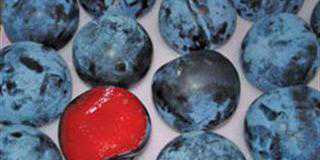A project aimed at furthering scientific ostrich breeding is showing impressive progress, thanks to the work of Stellenbosch University (SU) researcher Dr Marna Smith. The project involves students and staff at the university as well as members of the Western Cape department of agriculture.
As part of her PhD in animal sciences from SU, Smith has established a protocol by which ostrich semen can be cooled successfully for up to two days, or stored indefinitely after freezing, until required for the AI of female birds.
Further refinement of the protocol will lead to improved assisted reproduction techniques, according to a statement released by the university.
In future, stored semen from birds of outstanding genetic merit can be bought in from other studs to be used for fertilisation. This should enable private breeders to ensure that certain traits of economic importance can be transmitted from generation to generation.
In addition, the long-term preservation of semen makes it possible to artificially inseminate females during their most important reproductive months with semen samples collected when semen production is at its best. These cycles do not always overlap in nature.
“Better methods of preserving semen will make it possible to build up ostrich studs with pedigree information,” explains Smith. Ostriches in flocks make use of communal nests, which makes the assignment of pedigrees difficult, if not impossible.
“Genetic tests to assign pedigrees to chicks produced by free-ranging ostriches are available, but are not currently affordable for the wider industry,” explains Smith’s study leader, Prof Schalk Cloete, extraordinary professor in the SU Department of Animal Sciences, and a member of the Western Cape department of agriculture research team.
With a workable protocol for the assisted reproduction of ostriches, farms and studs will eventually be able to keep fewer male breeding birds.
“Fewer or no males means considerably lower costs and a higher profit margin for farmers,” says Smith. “You also have to cope with fewer aggressive male birds, making it safer for farmworkers. Such advantages are already the norm in the dairy industry.”
The technology also makes it feasible to establish a biobank where semen from ostriches with good genetic traits can
be stored. This is important for the storage of seminal plasma of genetically superior animals, and indispensable for helping to build up colonies following a disease such as avian flu, during which affected animals have to be destroyed.
Email Prof Schalk Cloete at [email protected], or Dr Marna Smith at [email protected].













